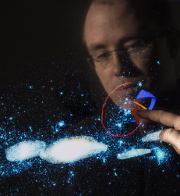
2017-04-07
10:15-11:00
Visual Computing Forum
Abstraction is a concept that is fundamental in both non-photorealistic rendering (NPR) and (illustrative) visualization. In NPR, abstraction is introduced by choosing a subset of elements to depict, by simplifying the depicted elements, by choosing a particular style of depiction, or by even changing the underlying geometric model. Here, abstraction typically serves an aesthetic goal. In illustrative visualization, abstraction is often used to emphasize important parts and de-emphasize less important ones. Traditionally, however, most authors argue that by simply using an NPR style or by using methods from illustrative rendering they automatically abstract—only few approaches actually discuss how the abstraction is introduced, what types of abstraction exist, and how abstraction can be controlled. I will discuss three approaches that not only rely on abstraction but also allow users to control it. First, I will discuss an approach for the abstraction of visualizations of molecular structures in which a continuous abstraction space between structural abstraction, abstraction through spatial perception, and abstraction by means of “illustrativeness” is created. Users can navigate this space to adjust visualization to their specific needs. Then I will talk about the abstraction of brain connectivity though the contraction of fiber tracks based on local similarity. And finally, I will discuss an example from NPR in which different abstraction strategies are used to affect map data in order to create an abstract map representation that is guided by each person’s individual aesthetics.
